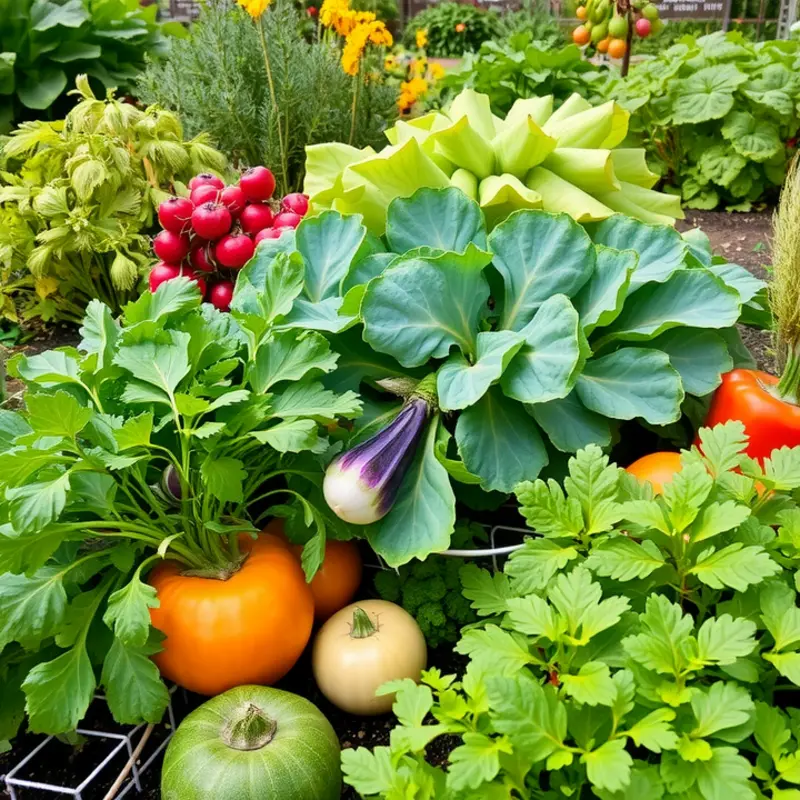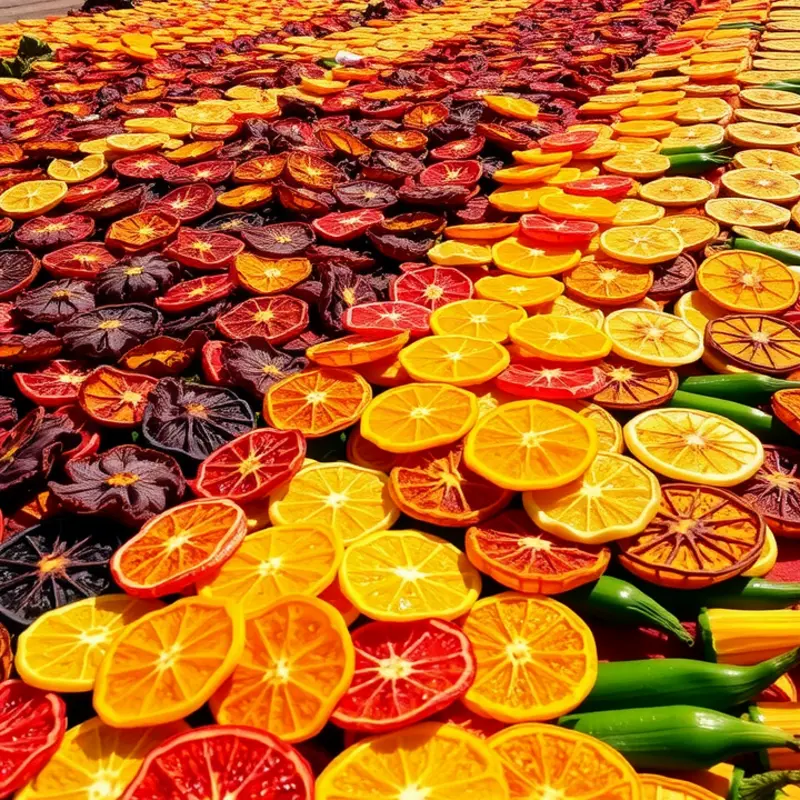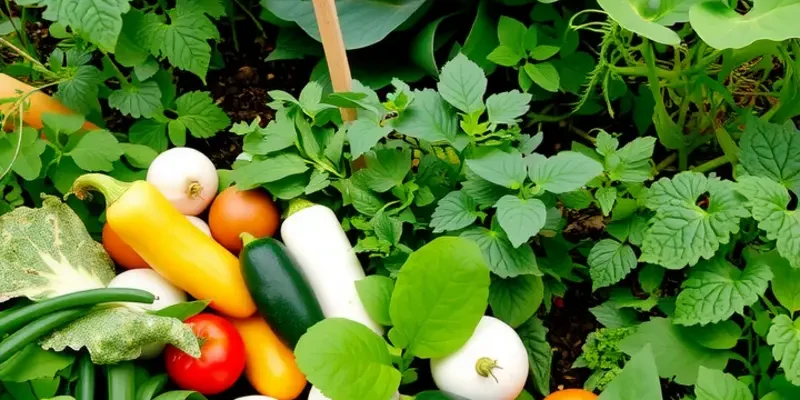As the seasons change, so do our culinary practices. From fermenting fresh vegetables to drying fruits, seasonal preservation traditions abound worldwide. These methods not only enhance sustainability but also celebrate unique flavors that reflect local cultures. Join us as we delve into the rich tapestry of global culinary traditions that encapsulate the essence of seasonal harvests.
The Art of Fermentation: A Global Tradition

Fermentation, an ancient culinary technique, transforms ordinary produce into flavorful staples rich in probiotics and nutrients. This art harnesses beneficial bacteria to preserve goods, ensuring they last well beyond their natural shelf life. Across cultures, this method of preservation adds unique flavors to traditional dishes, while adapting to local climates and available ingredients.
In Korea, kimchi stands as a quintessential example of fermentation. Traditionally, families prepare vast quantities in late autumn, using napa cabbage and an array of seasonings: garlic, ginger, and the famed gochugaru chili powder. This communal activity, known as ‘Kimjang,’ is a UNESCO-recognized cultural practice, emphasizing togetherness and sharing. The resulting kimchi provides a spicy, tangy accompaniment to the Korean diet, enhancing both flavor and nutrition.
Moving to Europe, Germany’s sauerkraut showcases how simple techniques create remarkable results. Cabbage shredded finely, layered with salt, and left to ferment becomes a tangy relish that’s crucial to German cuisine. This method relies on lactic acid bacteria, naturally occurring and widely appreciated for promoting gut health.
In Japan, miso, a fermented soybean paste, offers another perspective on this age-old craft. Miso’s production involves a blend of soybeans, salt, and koji—a mold that breaks down proteins and starches into savory amino acids. This umami-rich paste underpins various Japanese dishes, from soups to marinades, celebrated for both its depth of flavor and nutritious properties.
Across the Indian subcontinent, traditional foods like dosa and idli showcase fermentation’s versatility. Rice and black lentils form the basis, soaked and ground into batter, then left to ferment overnight. The result is a light, fluffy texture bursting with subtle tang that complements spicy curries and chutneys.
Each culture has tailored fermentation to suit regional staples and tastes, highlighted by food’s ability to connect communities and conserve harvests. Exploring regional variations reveals an appreciation for sustainable practices. This method not only preserves food but also contributes to richer, more diverse culinary landscapes.
For those exploring fermentation at home, selecting the right ingredients ensures successful outcomes. Understanding local produce and seasonal availability can guide you in replicating these traditional processes. To expand your knowledge on preserving ingredients and maintaining freshness, consider exploring sustainable kitchen storage ideas here.
Incorporating the art of fermentation into modern kitchens celebrates centuries of culinary evolution. As a timeless testament to human ingenuity, it captures the essence of preserving seasons while enhancing both tradition and taste.
Sun-Dried Delights: The Global Legacy

Sun-drying stands as one of the oldest methods for preserving fruits and vegetables, a practice deeply embedded in many cultures worldwide. This technique, relying on the sun’s natural warmth, not only extends the life of produce but also enhances its flavor, creating culinary secrets cherished through generations.
Take, for instance, the sun-dried tomatoes of Italy—a staple in Mediterranean cuisine. These tomatoes boast an intensified sweetness and richness, lending a burst of flavor to pasta, salads, and antipasti spreads. The Italians have long celebrated this method, necessitating plump tomatoes be sliced, salted, and laid out under the sun’s rays. With each day, the water content evaporates, and the concentrated flavors emerge, providing a taste of summer even in the depths of winter.
Across the globe in tropical regions, sun-dried mangoes are adored for their chewy texture and tangy sweetness. This practice preserves the exuberant flavors of ripe mangoes, offering a deliciously portable snack or an ingredient in desserts and savory dishes alike. Sun-drying mangoes has been an integral part of ensuring these tropical jewels can be enjoyed year-round, even stretching into the less fruitful months.
Historically, sun-drying served as an essential survival technique, especially in regions where seasonal changes or agricultural practices limited fresh produce availability. Cultures evolved with this technique, developing unique variations and flavor profiles linked to their local environments. In the arid regions of the Middle East, for example, sun-dried apricots capture the essence of the warm, sandy expanses, preserving a rich source of vitamins and energy for the somewhat scarce diet of the desert.
To try sun-drying at home, it’s crucial to be mindful of the climate and location. A dry, warm environment with plenty of sunlight is ideal, and elevated spaces that promote airflow help ensure even drying. Sliced produce should be kept elevated on screen-lined trays, allowing air circulation beneath to prevent mold or uneven drying. It’s also recommended to cover the produce with netting or cheesecloth to protect it from insects.
For those experimenting in climates less suitable for sun-drying, modern dehydrators serve as a capable substitute, mimicking the effects of the sun. This method can be especially useful when extending the lifespan of seasonal harvests in more humid climates. By turning sun-drying into a weekend project, home cooks can enjoy the satisfaction of preserving the taste of a season in their pantry. Incorporating sun-dried fruits or vegetables into culinary creations is a way to enhance dishes naturally, offering a flavor boost without added salt, as seen in this guide.
Through sun-drying, cultures globally have unlocked the potential of preserving life’s simpler joys, basking in the sunshine’s ability to transform ordinary produce into something lasting and extraordinary. Whether through Mediterranean tomatoes, tropical mangoes, or desert apricots, each sun-dried delight weaves a story of tradition, necessity, and the ongoing celebration of nature’s bounty.
Final words
Culinary traditions surrounding seasonal preservation serve as a testament to the creativity and resourcefulness of cultures worldwide. These techniques, whether through fermentation or sun-drying, not only allow us to savor flavors beyond the harvest but also promote sustainability. By embracing and learning these practices, food enthusiasts can deepen their appreciation for global cuisines and contribute to a more thoughtful food culture. Let’s celebrate the treasures of seasonal abundance and the stories they tell through food preservation.








